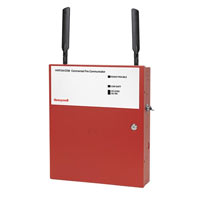

In addition to public and private operating mode, there are some requirements that are specific to areas in which occupants may be sleeping. Public mode signaling is required to have a sound level that is at least 15 decibels above the average ambient sound level and 5 decibels above the maximum sound level having a duration of 60 seconds, while public mode signaling is only required to have a sound level that is at least 10 decibels above the average ambient sound level and 5 decibels above the maximum sound level having a duration of 60 seconds. For more information on private operating mode, take a look at this blog.

On the other hand, in a hospital the fire alarm system may utilize private mode signaling to alert the hospital staff that there is an emergency, and they need to begin evacuating or relocating the patients in accordance with their emergency action plan. For example, a fire alarm system within a restaurant would utilize public mode signaling to alert all the occupants that there is an emergency and that they need to evacuate. Public mode signaling is used when you want to alert all the occupants within the building that there is an emergency, while private mode signaling is used to only alert the occupants responsible for responding that there is an emergency. There is not a requirement for the specific sound that is used, however, there is a requirement for the sound pattern, and in some cases, there is a requirement for the frequency (pitch) of the sound. The required sound level is based upon the type of signaling mode the system is using, it can be either public mode signaling, or private mode signaling. The design is based on producing a sound level that is over the ambient sound level of the space. This sound pressure level is measured in decibels.

The audible notification is designed to produce a specific sound pressure level (volume). You may see these appliances mounted on the wall or on the ceiling. Notification appliances can just be speakers or horns, or they can be a combination unit which provides a strobe light in addition to the speaker or horn. Fire Alarm speakers are used to create tones and voice messages, while a horn can only create a tone or single sound. The audible notification can consist of either tones and a voice message, or just tones. Since the direction of the flow has changed, the diodes will allow the current to flow through the notification appliances and cause the audible and or visual notification. During an alarm condition the FACU will reverse the polarity of the voltage (switch the direction of the current flow) and increase it (typically to 24 vdc). If the FACU no longer sees the supervisory voltage, it knows that there is an issue and it will create a trouble condition. The supervisory voltage is sent through in a direction such that the diodes do not allow any current to pass through the notification appliances. In a non-alarm condition, the FACU will send a small supervisory voltage through the circuit to monitor it for integrity (typically 6 vdc). Each notification appliance has a diode in it that only allows current to pass through it in one direction (think of it like a one way valve). Notification appliances are controlled by the fire alarm control unit (FACU) using a notification appliance circuit (NAC).
Firelite voice evac code#
When a fire alarm system is installed within a building, the requirements for the type of notification (audible, visible, and voice) is driven by the building code, fire code, or life safety code that is adopted in that jurisdiction. The fire alarm control unit provides the signal to the notification appliances via a notification appliance circuit (NAC). The visible notification is typically provided via strobes, and audible notification is provided by either speakers, which can provide different tones and voice signals, or horns, which can only provide a single sound. Notification is provided via visible and audible notification appliances.

This blog will take a deeper dive into the notification portion of a fire alarm system.Ī fire alarm system can notify the occupants and in some cases on site emergency forces of an emergency. For an overview of the entire system take a look at my Guide to Fire Alarm Basics Blog.
Firelite voice evac series#
The objective of this blog series is to discuss some of the major components and functions of a fire alarm system. A fire alarm system serves many functions and the differences between the functions can be a bit confusing, so I created a visual guide to fire alarm basics. A fire alarm system is a crucial part of the overall fire protection and life safety strategy of a building.


 0 kommentar(er)
0 kommentar(er)
